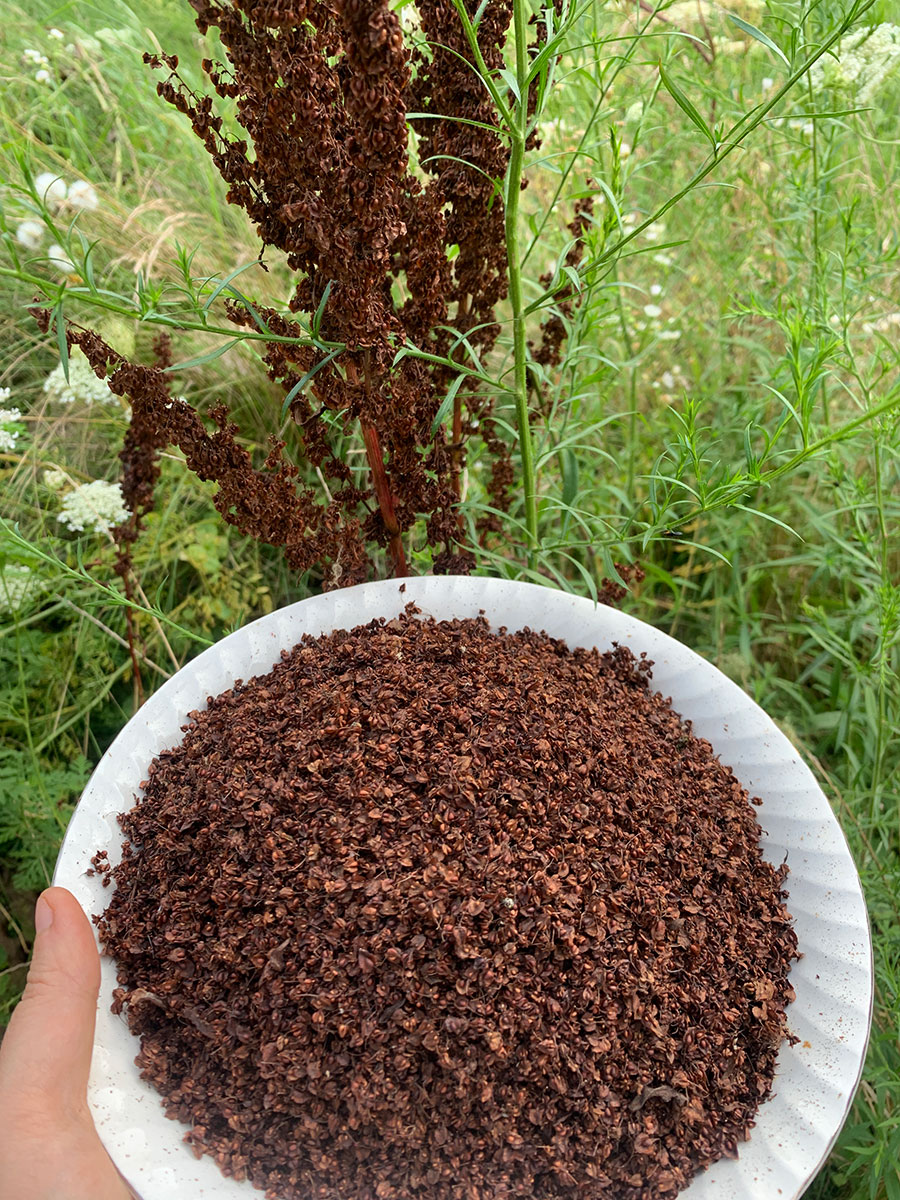
This past month, I had a chance to visit Silver Acres, my friend’s 5 acre farm in the thumb of Michigan, where she is practicing rewilding, restoration agriculture, and permaculture. We were walking through her field and found a good deal of yellow dock that was in seed form–which for the Midwest US, usually happens around Lughnasadh (August 1st) and continues to the Fall Equinox. While I’ve eaten the young leaves and used the roots as medicine, I haven’t had a chance to try making any seed flour yet–so we set about our task joyfully. I’m quite impressed by how easy this flour is to make (compared to say, acorn flour) and it cuts nicely with other flours.
Foraging for wild foods is not only a fantastic way to connect deeply with the land but also allow us to reconnect with our ancient ancestral lifeways. It allows us to connect deeply with the land and bring some of that energy int our own lives.
Yellow Dock Ecology and Foraging
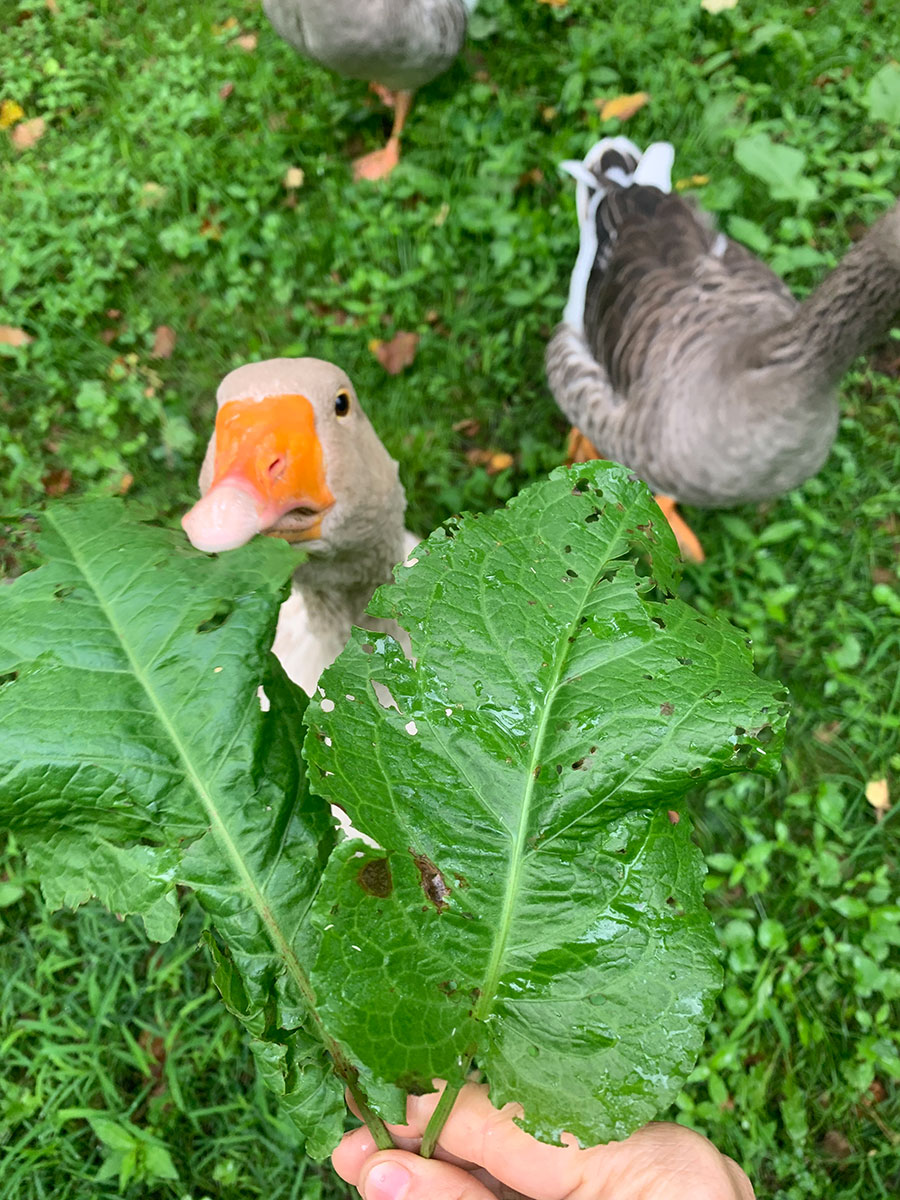
Yellow Dock (Rumex crispus) is in the buckwheat family, which is part of why she makes a nice flour! Yellow dock is also known as Curly Dock or Narrowleaf Dock. Yellow Dock is a first-aid responder plant, an opportunistic plant that can quickly spread to new areas after disruption. Thus, you will often find her growing in areas that have poor soil, have recently been disrupted (such as construction sites), or other places where the land was recently disturbed. As part of her ecological function, she begins to break up compacted soil with her deep tap root. One of the reasons its good to learn how to eat and make medicine of yellow dock in all of her forms is that she is considered an “invasive” weed in the USA, and thus, ethically-based foraging is a wonderful way to keep this plant in check.
Yellow Docks are perennial plants that can, when mature, produce up to 40,000 seeds per year. The seeds can stay in the ground for up to 50 years, and when the opportunitiy arises, the yellow dock will arise from the soil! This is how they are able to so quickly colonize disturbed areas.
Once you find a patch of yellow dock, you can return to it over and over again for food and medicine. The seeds persist on the plants into the winter, and slowly drop as winter turns to spring. The easiest time to spot them is after the seeds have turned to a beautiful rust brown and dried (usually by mid August here in Pennsylvania). Thus, you have a fairly long harvest window with regards to the seeds. Each year, Yellow Dock also produces curled leaves (see photos) which are fairly palatable when young (cook in several changes of water).
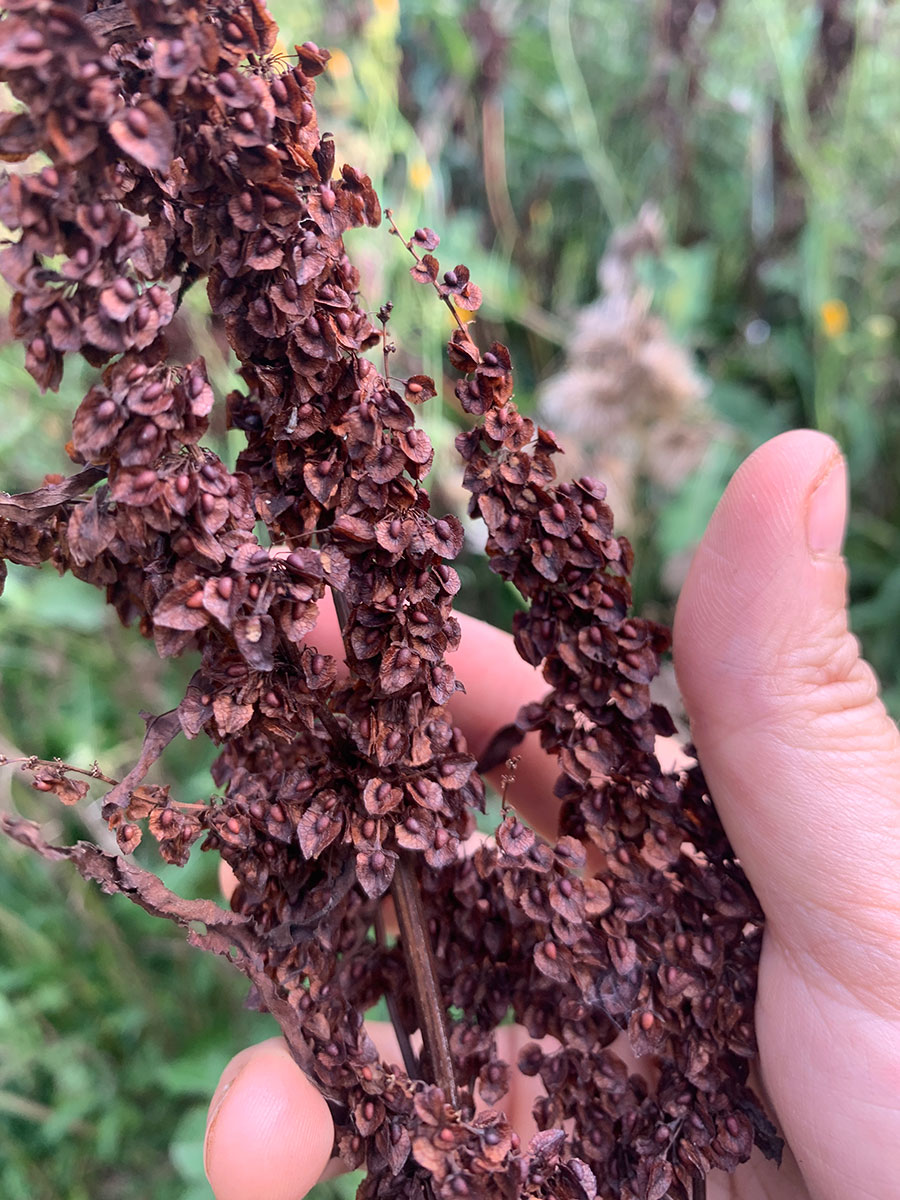
The very good news in terms of foraging ethics is that because Yellow Dock is considered invasive and can be found in abundance almost everywhere, you can harvest as much yellow dock seeds as you want for flour. A few hours of harvesting and processing can yield considerable amounts of very easy-to-process flour! I still recommend that you seek permission from the plants and offer gratitude if you have permission to harvest. I have found it is easiest to harvest these with a basket or paper back. Just snap off or cut the mature seed stalk and place them into a bag.
Harvest the seed heads when they are dry for the best flour. If you have to harvest them wet, let them sit out in the sun until fully dry. Its hard to strip them from the stalks when they are wet.
Preparing Yellow Dock Flour
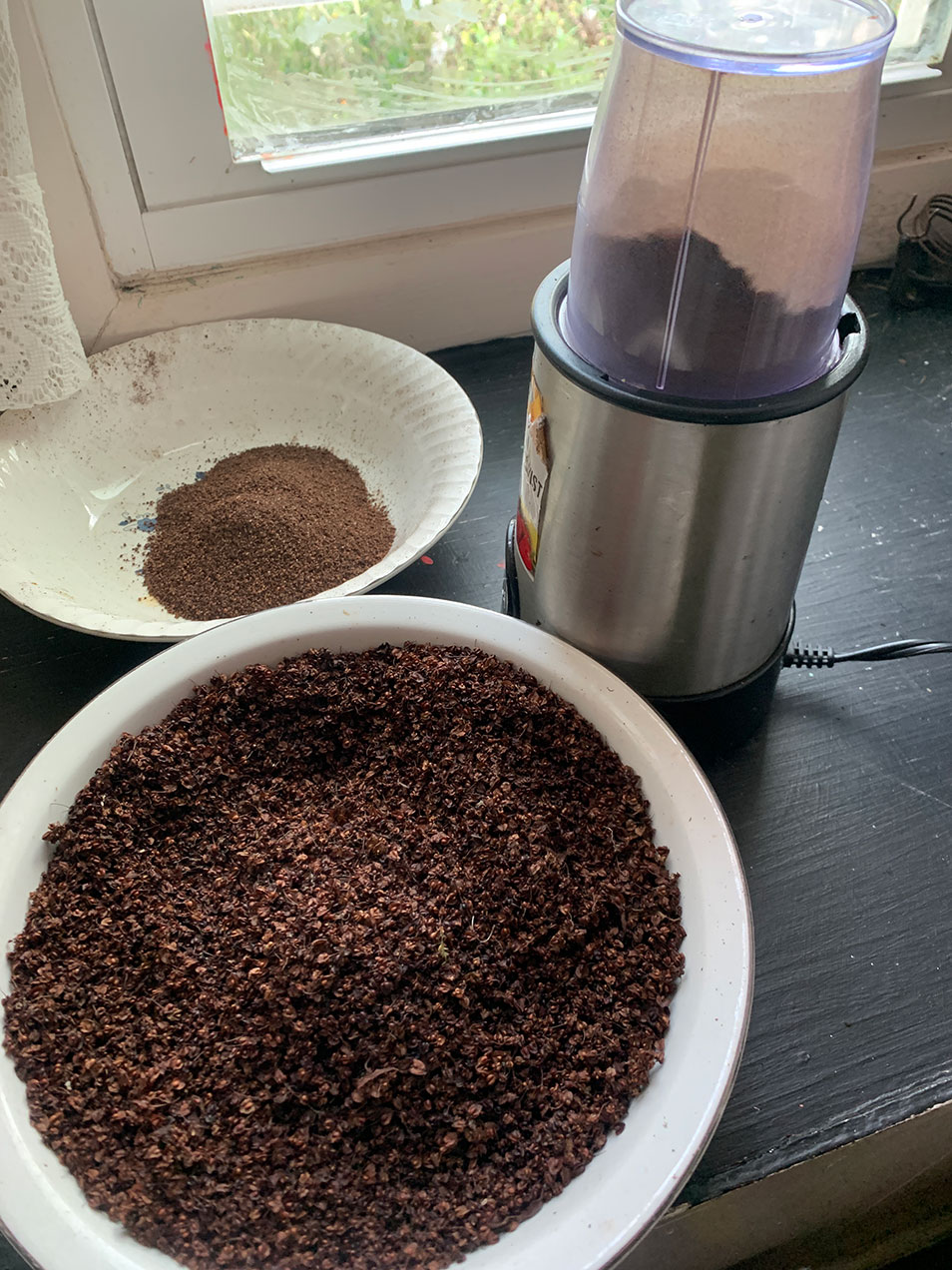
Yellow Dock flour has three major steps for preparation: remove seed heads from stalk; toast seed heads on the stove or in the oven; and then grind them in a coffee grinder, mortar and pestle, or magic bullet. I’ll walk you through each step.
I will note here that some foraging books say Yellow Dock Seed is not worth harvesting because its impossible to separate the seeds from the chaff (the seed casing). But in the case of Yellow Dock, you simply grind everything up together.
Remove seed heads from stalk. Once you have harvested, find a nice place outside to sit and strip the seed heads by hand into a large bowl or other vessel. Return the stalks to the land (somewhere where you want yellow dock to come up, as there are likely seeds remaining!). I suggest doing this outside because it is a messy job!
Toast the seeds. The next step is to toast the seeds. You can do this on the stovetop in an iron skillet- just add a few handfuls of seeds, stir them till you hear popping, and then remove from heat and do the next batch. Alternatively, you can roast them in the oven for 5 minutes at 350. You’ll see a difference in both the color and smell of the seeds. This step is really worth it as it produces a much better tasting flour!
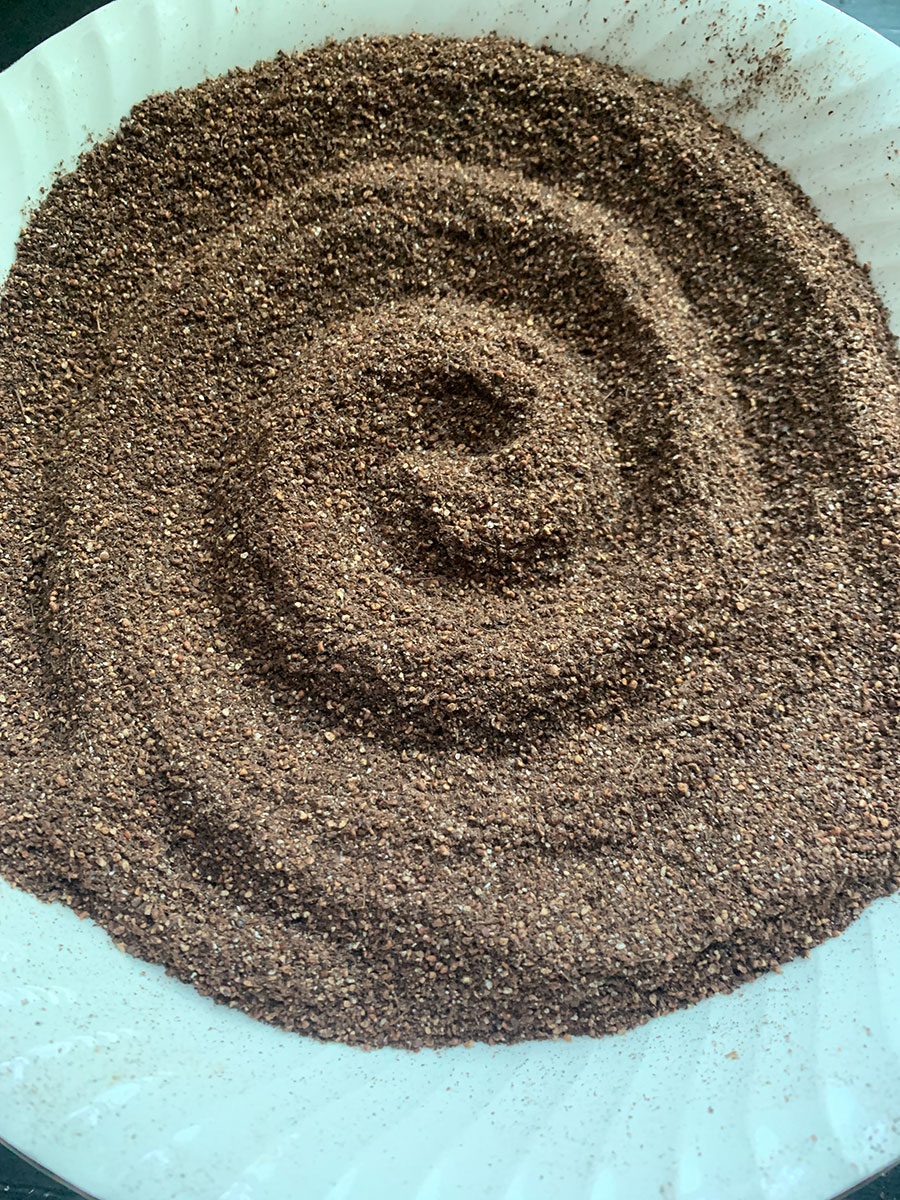
Grind the seeds. Using a Vitamix, magic bullet, coffee grinder, or mortar and pestle, grind the seeds in small batches. You will want to work to get as fine of a grind as possible on your flour. You’ll end up with something looking like the photo on the right!
Storage: Like other wild flours, this has about a six month shelf life. You can extend the shelf life by freezing it (where it will stay good up to two years.
Recipes
There are few things to know about Yellow Dock flour. First, Yellow Dock flour does not contain any gluten, so it will produce a much “flatter” bread than wheat flours, which you should keep in mind when using it. When it is cooked on its own, it has a bitterness that can be a bit unpalatable (e.g. straight yellow dock flour) so I recommend using it in combination with another flour (use 25% or 50% yellow dock). The bitterness is considerably lessened into something quite delicious when you add some sweetness. I don’t find that it has a particularly strong taste but rather will take on the taste of the other ingredients (like acorn flour).
Yellow Dock Pancakes
I adapted my acorn pancake recipe for use with Yellow Dock, and it works great!
- 1 cup yellow dock flour
- 1 cup other flour (white, wheat, or GF)
- 1 teaspoon salt
- 2 teaspoons baking powder
- 2 eggs (duck eggs if you can get them!)
- 1/4 cup of oil or butter
- 2 cups milk
- 1/3 cup sweetener (I use maple syrup, you can also use sugar or honey)
This recipe makes about 12 pancakes.
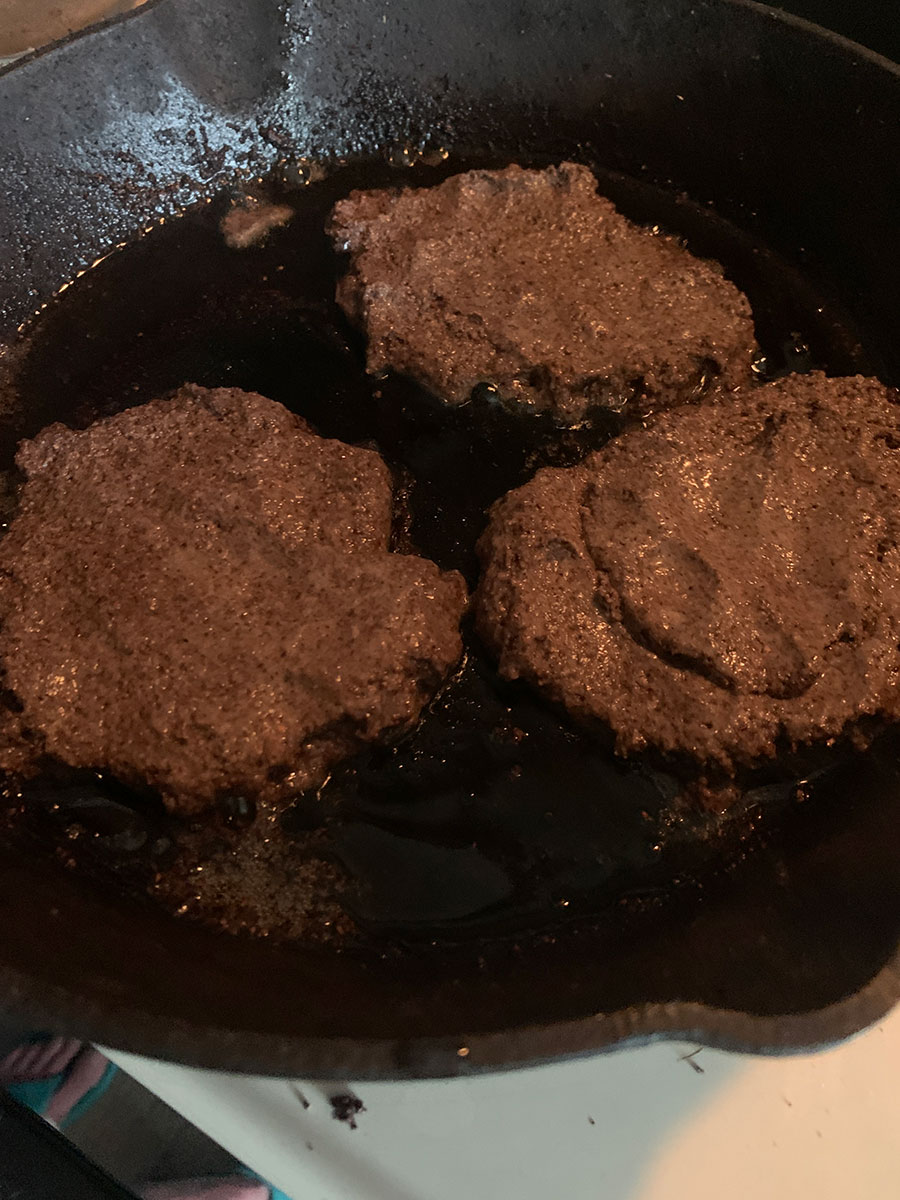
Combine all dry ingredients then add wet ingredients slowly and stir till well mixed. Dock seeds can tend to absorb moisture, so check to see if its too thick– if so, add more milk. If it’s too runny, add a little more flour. Prepare a griddle, allowing it to heat up. Check your heat by putting a tiny bit of batter on the griddle and seeing how it does and then adjust your heat accordingly. Lightly oil your griddle (butter, olive oil, bacon grease) and then pour out pancakes using a 1/2 cup measuring cup. Cook on one side for 2-3 minutes, until you see bubbles rising through. Flip and cook another 1-2 minutes. Serve hot with fresh jam, maple syrup, and butter. You can freeze the leftovers.
Here are some other inspirational recipes for your yellow dock flour!
Double Chocolate Dockseed Cake
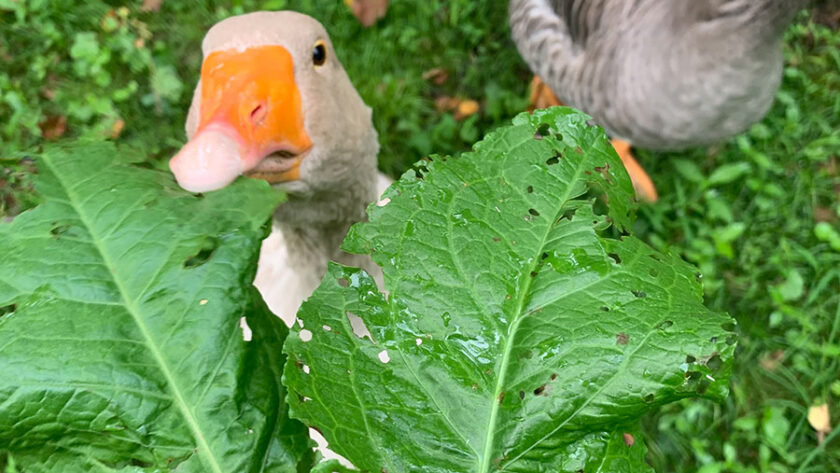


Reblogged this on Paths I Walk.
Thanks Dana! This is such a useful post. I am excited to give the flour a go. 😊
[…] Wild Food Profile: Yellow Dock (Rumex crispus) Seed Flour & Yellow Dock Pancake Recipe […]
Thank you very much Dana! This year is my first year to know what this “weed “is and of the many uses for it. Your article is exceptionally well written and researched. The Dock plant grows so bountiful in my area that it looks as if it has been planted. It’s great to know it by some other name and reputation than being simply a weed. I am anxious to try it and have harvested already a couple gallons of seed. I had to smile when you advised of stripping the seeds outdoors! YES! Strip seeds outdoors as my attempt to do so indoors led to a huge clean up project. With just those plants growing near my home, I suspect I could harvest hundreds of gallons were I inclined to do so. It is just that plentiful. It is easily identifiable this time of year as well as nothing else growing has the appearance of those tall dark brown seed heads. They are most distinctive once you know what you are looking for. There is little cause for hunger to exist in this world with the abundance of food available to us in nature. I remain respectfully and humbly your student.
Awesome! That is amazing you have access to so much. I hope you enjoy harvesting it! Let me know what you end up making 🙂
Love this – can’t wait to try it!
This is so nice, I can’t wait to try it my self.
Yes, please do and let me know how it goes 🙂